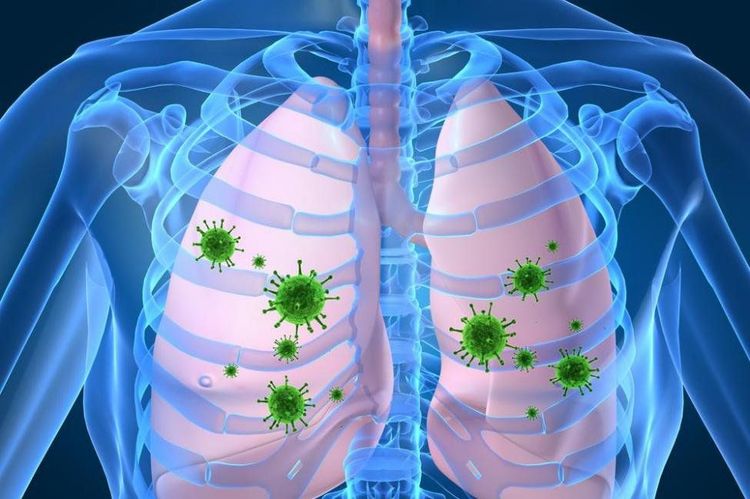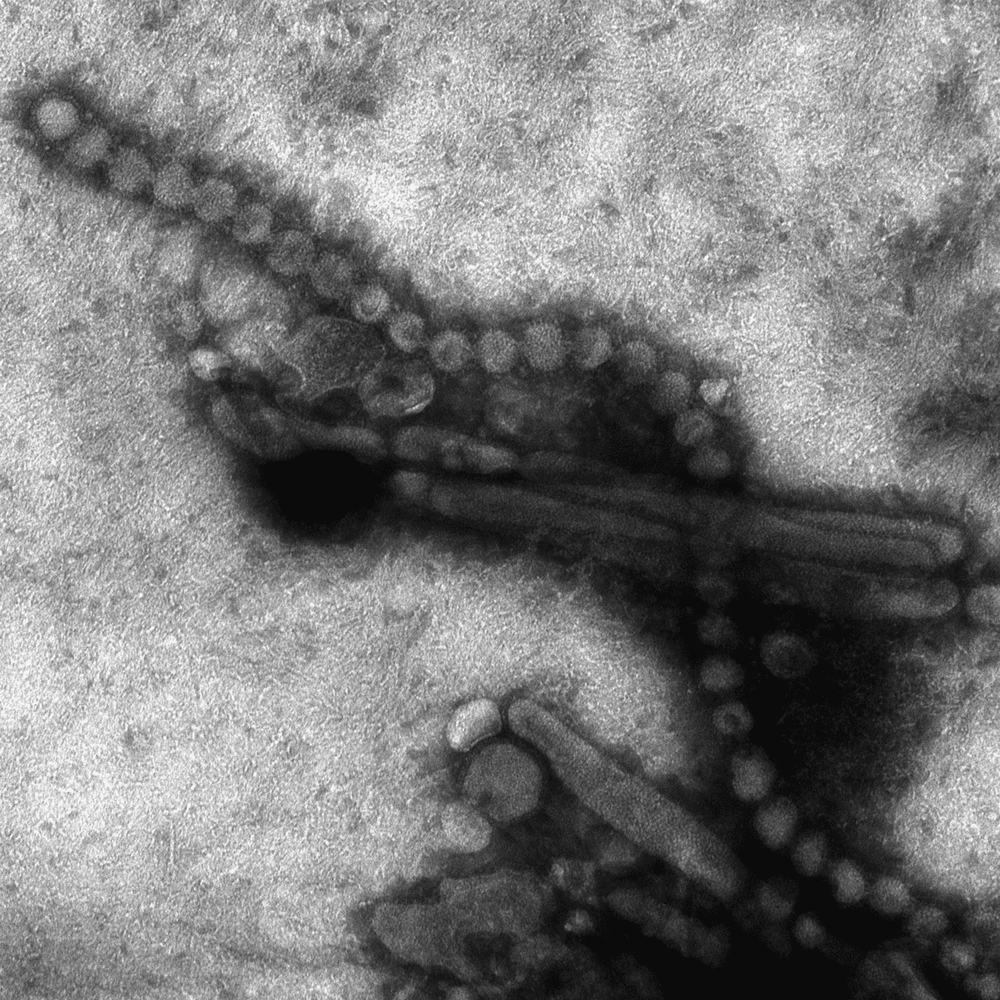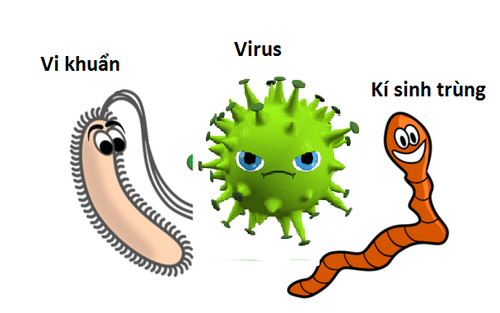This is an automatically translated article.
The article was professionally consulted with Senior Doctor, Dr. Vu Van Tam - Infectious Internal Medicine - Department of Medical Examination & Internal Medicine - Vinmec Ha Long International General Hospital.Influenza viruses are constantly changing and mutating. Variant influenza A virus can infect and cause serious respiratory illness in humans. These influenza viruses are different from the influenza A virus subtype circulating in humans and include influenza viruses of mainly avian and swine origin.
1. Overview of influenza A . virus
A new influenza virus is one that causes illness in humans, but is different from the seasonal influenza A viruses currently circulating in humans.New influenza viruses are usually influenza A viruses that circulate among animals. Some new influenza A viruses are thought to pose a greater pandemic threat than others and are associated with public health problems. Because they have caused serious illness in humans and can also cause death. And this virus can spread from person to person.
Influenza A viruses are of particular concern because of their potential impact on public health. If they are able to spread easily from person to person, this could cause a pandemic flu.
Human infection with a new influenza virus is a national concern and must be reported to the Centers for Disease Control and Prevention.
Below are the new influenza A viruses - considered dangerous viruses - that are currently associated with public health problems.

Virus cúm từng gây ra nhiều đại dịch trong lịch sử khiến nhiều người tử vong
2. Avian influenza virus A
Avian influenza A viruses do not usually infect humans. However, random infections in humans have occurred. Human illness caused by avian influenza infection can range from mild to severe (severe causes pneumonia).Several types of avian influenza A viruses are known to have been infected by humans (Virus H5, H6, H7, H9, H10).
Highly pathogenic Asian avian influenza A (H5N1) and low pathogenic avian influenza A (H7N9) strains account for the majority of human influenza A virus infections.
Human infection with avian influenza virus usually occurs after contact with infected poultry or their secretions or excretions, such as through direct or close contact, including entry into poultry markets. hold alive.

Virus cúm gia cầm A (H5N1)
3. Avian influenza virus A H5
Among the H5 influenza A viruses, the pathogenic avian viruses (HPAI) A (H5N1) that cause disease in Asia are the leading cause of infection in humans. Asian and Middle Eastern H5N1 avian influenza viruses currently circulating in poultry and human transmission were reported in 17 countries in 2003.Human H5N1 avian influenza virus infections are commonly associated with pneumonia severity and mortality higher than 50%. It is possible that the spread of the H5N1 bird flu virus from person to person is limited. However, unrestricted transmission has also been reported in some countries (HPAI H5 avian influenza virus detected in birds and parrots in the United States is variable and does not cause human infection).
The World Health Organization (WHO) has tracked several reported cases of HPAI H5 avian influenza virus and this number has been confirmed.
On January 8, 2014, the first human case of avian influenza H5 virus in Europe was reported: there was one case in Canada in a traveler returning from China. (No cases of Asian human infection with H5N1 avian influenza virus have been reported in the United States.)
Single human infection with HPAI H5 avian influenza virus has also been reported in China, infections can occur with severe illness and high mortality.

Virus cúm gia cầm A H5 gây viêm phổi
4. Avian influenza virus A H7
Among the H7 avian influenza viruses, the low pathogenicity group of avian influenza A H7N9 viruses in Asia have caused the most reported human infections, with most of the infections happened in China.The first H7N9 avian influenza virus infection was reported by the World Health Organization (WHO) on April 1, 2013. Scattered human infections continue to be reported in China. At the end of 2016 several H7N9 avian influenza viruses with low pathogenicity in Asia continued to develop mutations that made them more pathogenic in poultry. These Asian HPAI H7N9 avian viruses continue to be associated with infections in Chinese. Many patients infected with the Asian H7N9 virus have suffered from severe respiratory illness.
During 5 consecutive years of human epidemic of Asian H7N9 virus infection, the mortality rate in hospitalized patients averaged about 40%. It is likely that human-to-human transmission of the H7N9 avian influenza virus is limited. However, there are still unlimited cases reported in China.
Since the launch of a large-scale H5 and H7 avian influenza vaccination program in September 2017, very few cases of human infection with the Asian H7N9 avian influenza virus have been reported.
In January 2015, the Government of Canada and the Department of Health in British Columbia reported the first two cases of human infection in North America with the Asiatic H7N9 virus. These two are the infected couple who had traveled to China. In addition, travel-related cases of Asian avian H7N9 virus infection in China have also been reported in Hong Kong, Taiwan and Malaysia.

Ảnh hiện vi điện tử của virus cúm A (H7N9)
5. Avian influenza virus A H9
Scattered infections with low pathogenicity Avian Influenza A H9 viruses have also been reported in China, Hong Kong, Bangladesh and Egypt. Most human infections with the H9N2 avian influenza virus have occurred in children following exposure to poultry. Infection with the avian influenza virus H9N2 in humans usually causes mild upper respiratory tract illness.6. Swine flu virus/ Influenza A virus variant
Human infection with influenza A virus circulating in pigs may occur. When this happens, these viruses are called variant viruses. They can be indicated by adding the letter “V” to the end of the influenza A virus classification symbol.Disease associated with variant virus infections is mostly mild with symptoms similar to seasonal flu. However, like seasonal flu, it can become serious and lead to hospitalization and death. In general, variant viruses are associated with less severe disease and much lower mortality than human influenza A virus infections.
Usually, human infection with the variant virus occurs in people who come into contact with infected pigs (e.g. children in direct or close contact with pigs at a fair or workers in the swine industry). ), but has limited transmission, and is not contagious from person to person. Human infection with H1N1v, H3N2v, and H1N3v viruses has been detected in the United States.
Please dial HOTLINE for more information or register for an appointment HERE. Download MyVinmec app to make appointments faster and to manage your bookings easily.
Recommended video:
Influenza A: In which case you need to go to the hospital?
Reference source: cdc.gov
Recommended video:
Distinguishing Covid 19 from flu and cold













